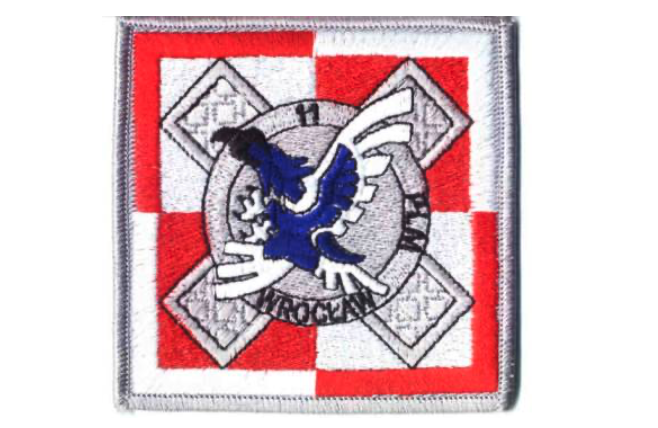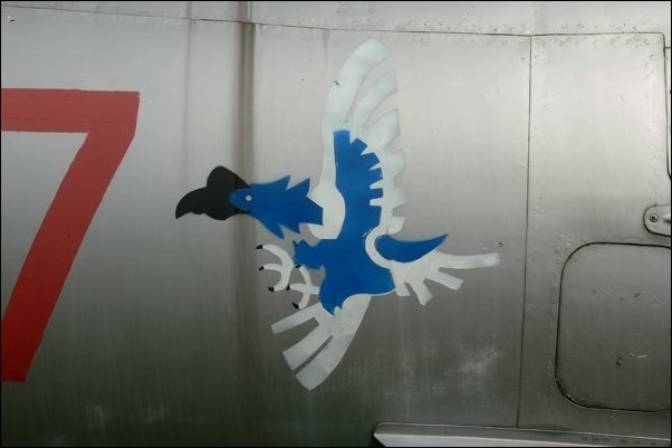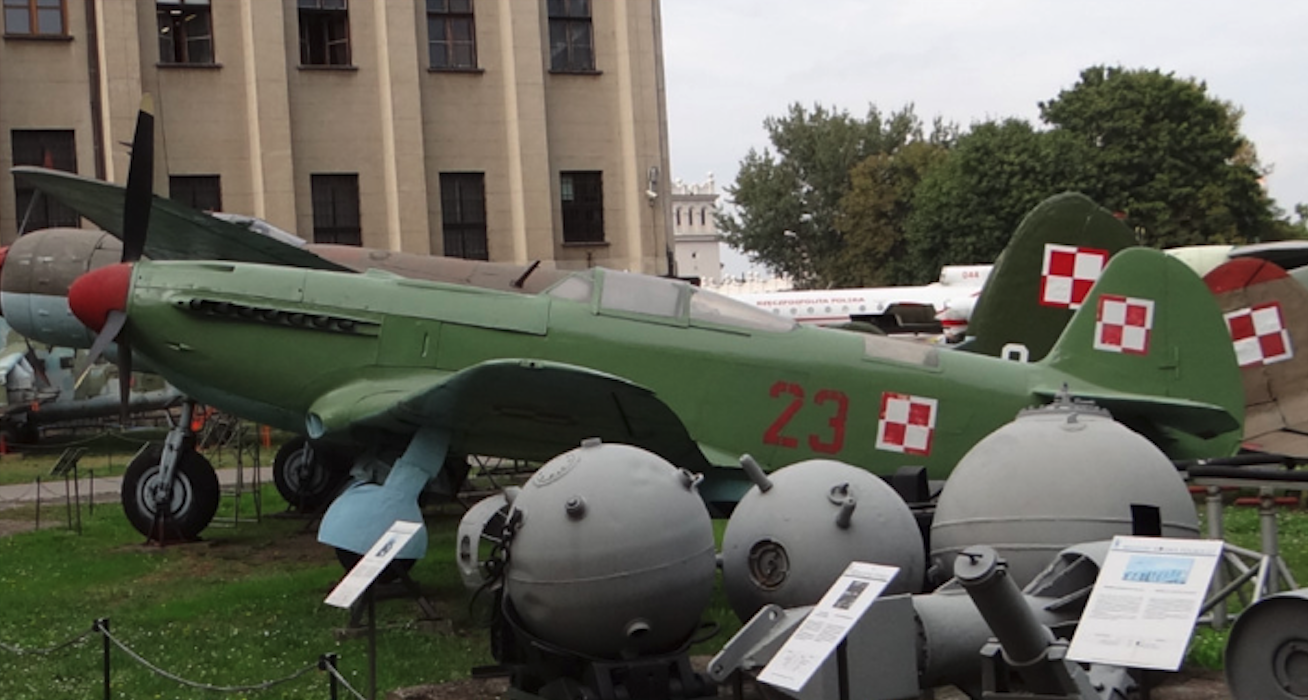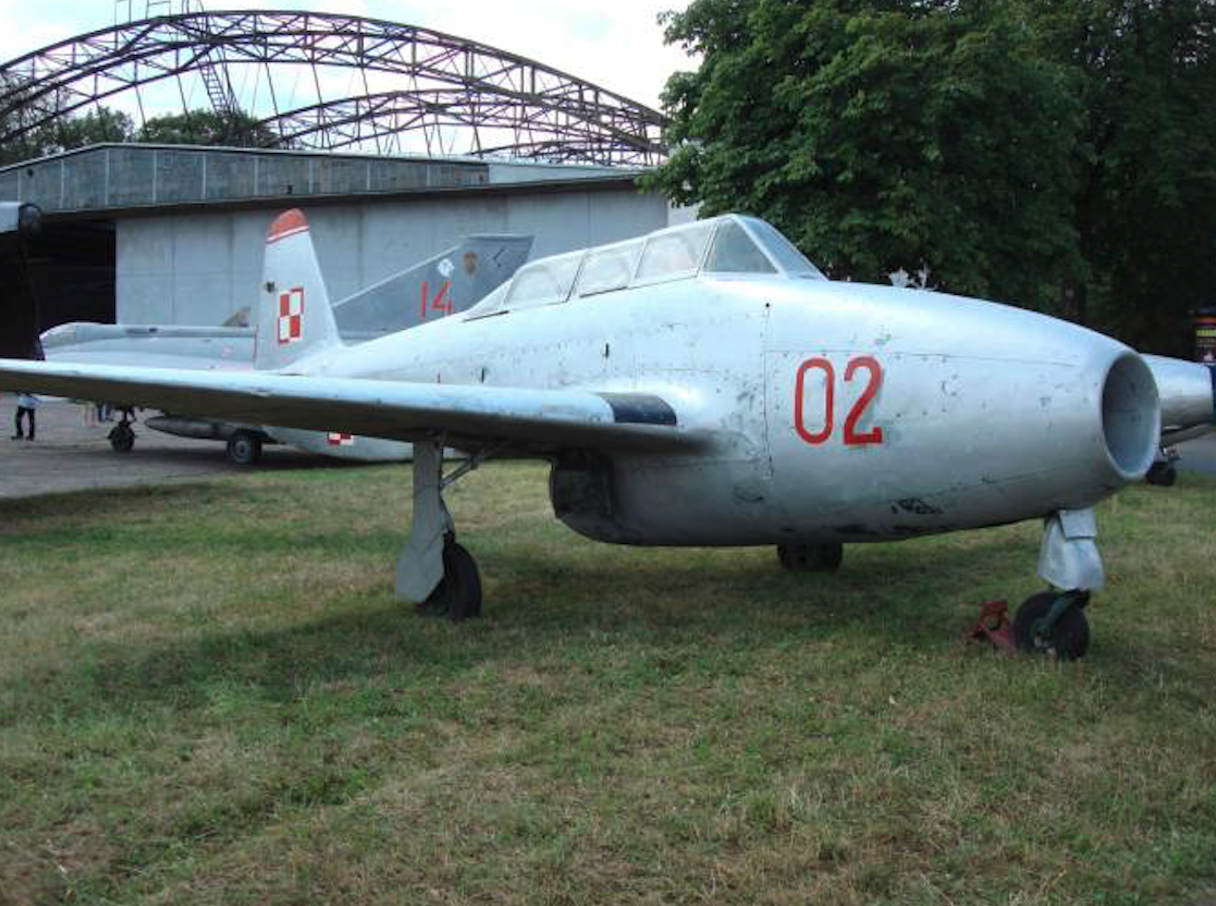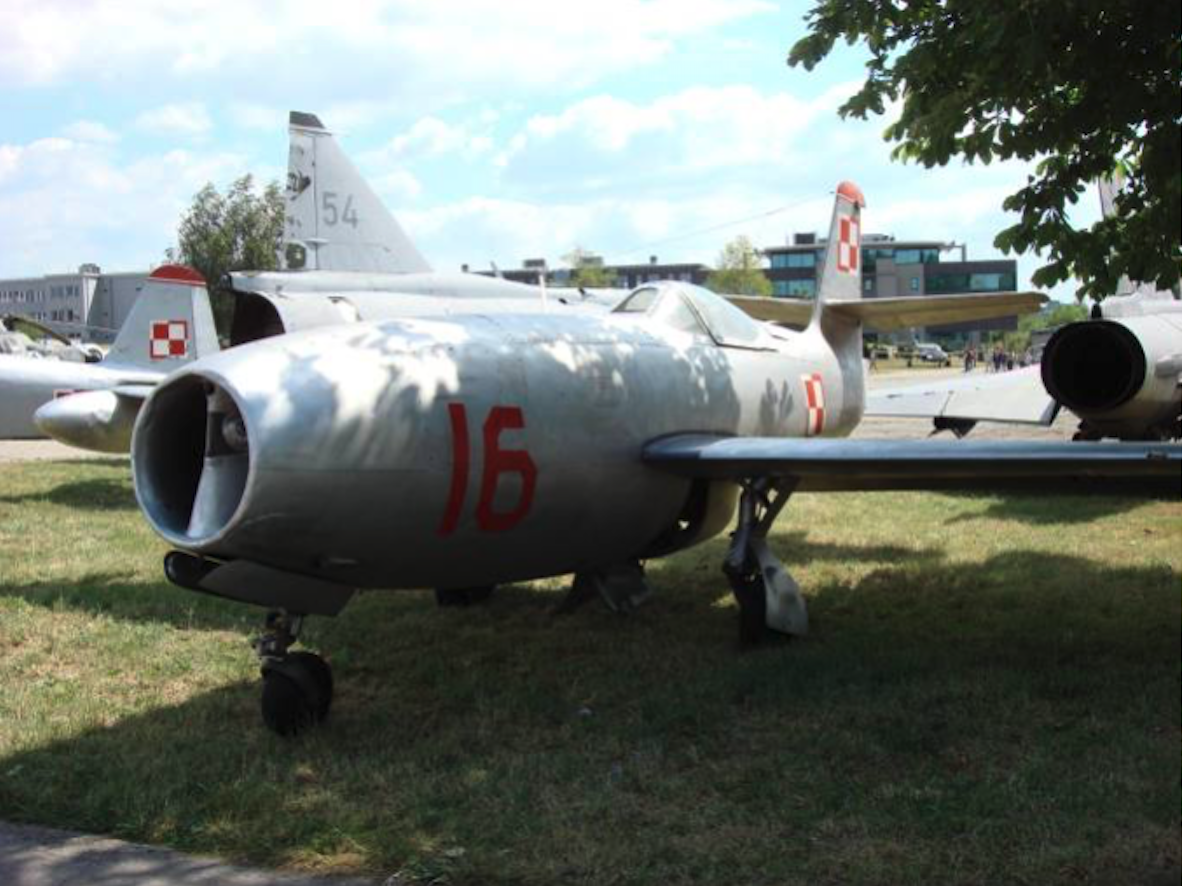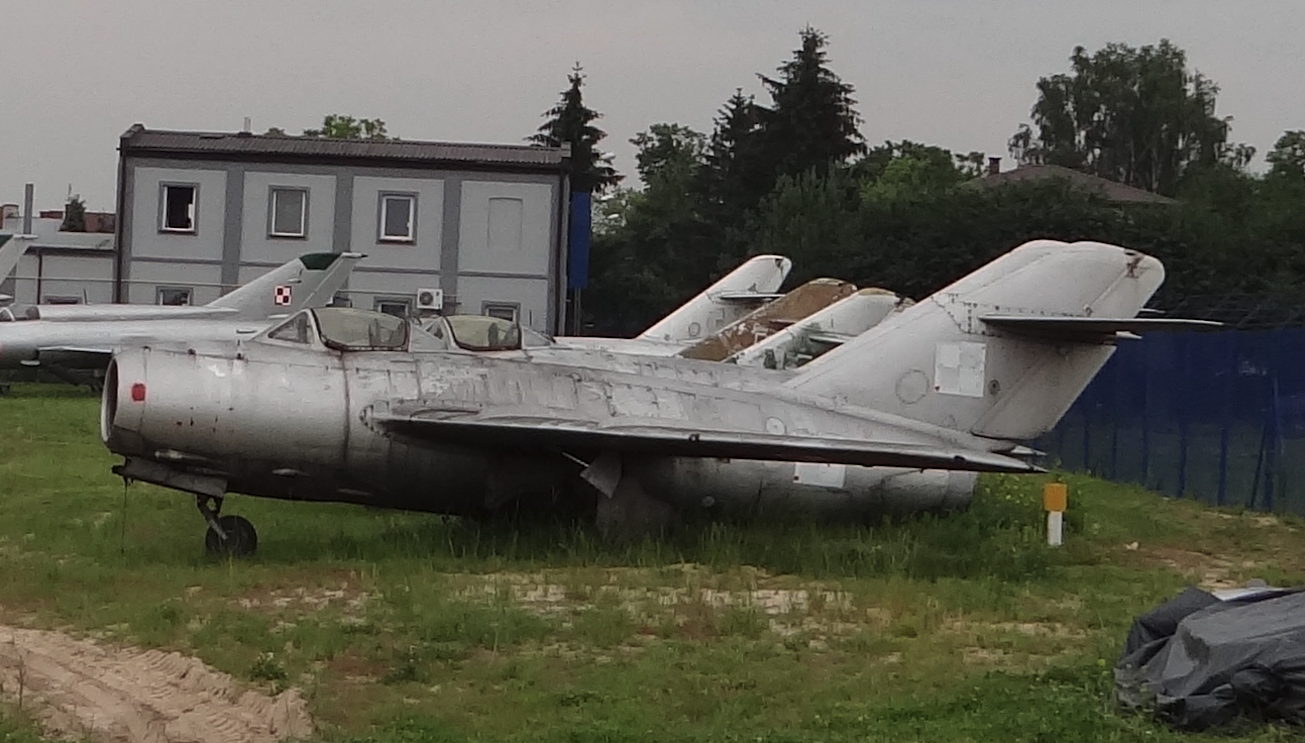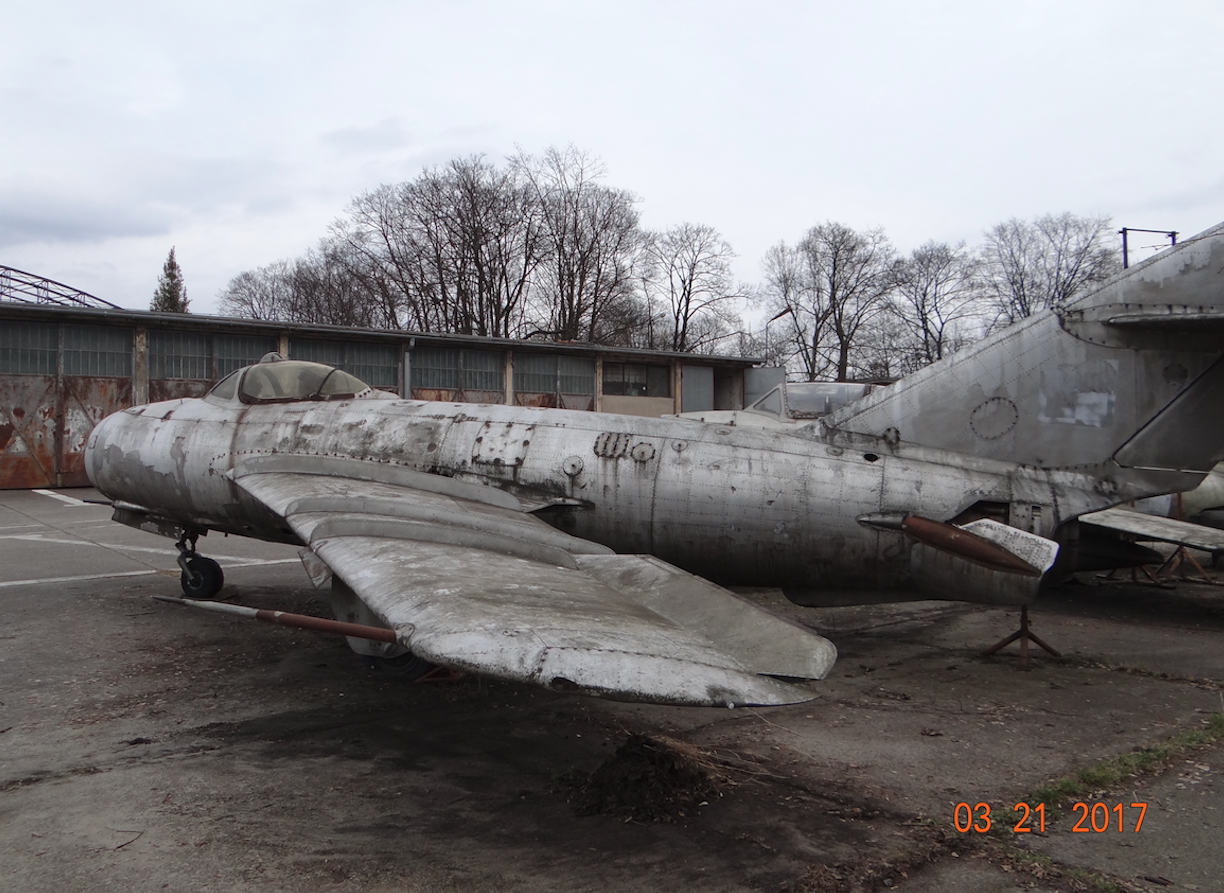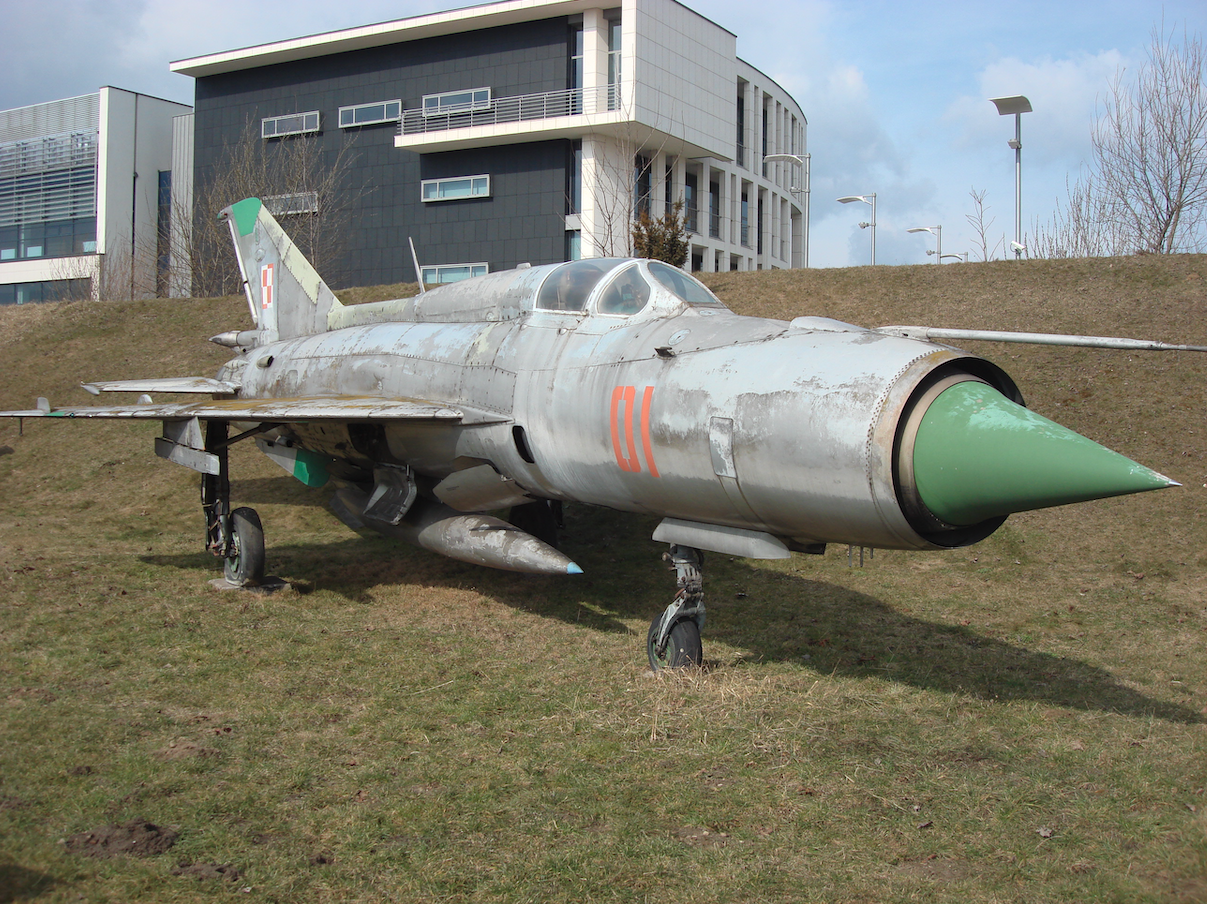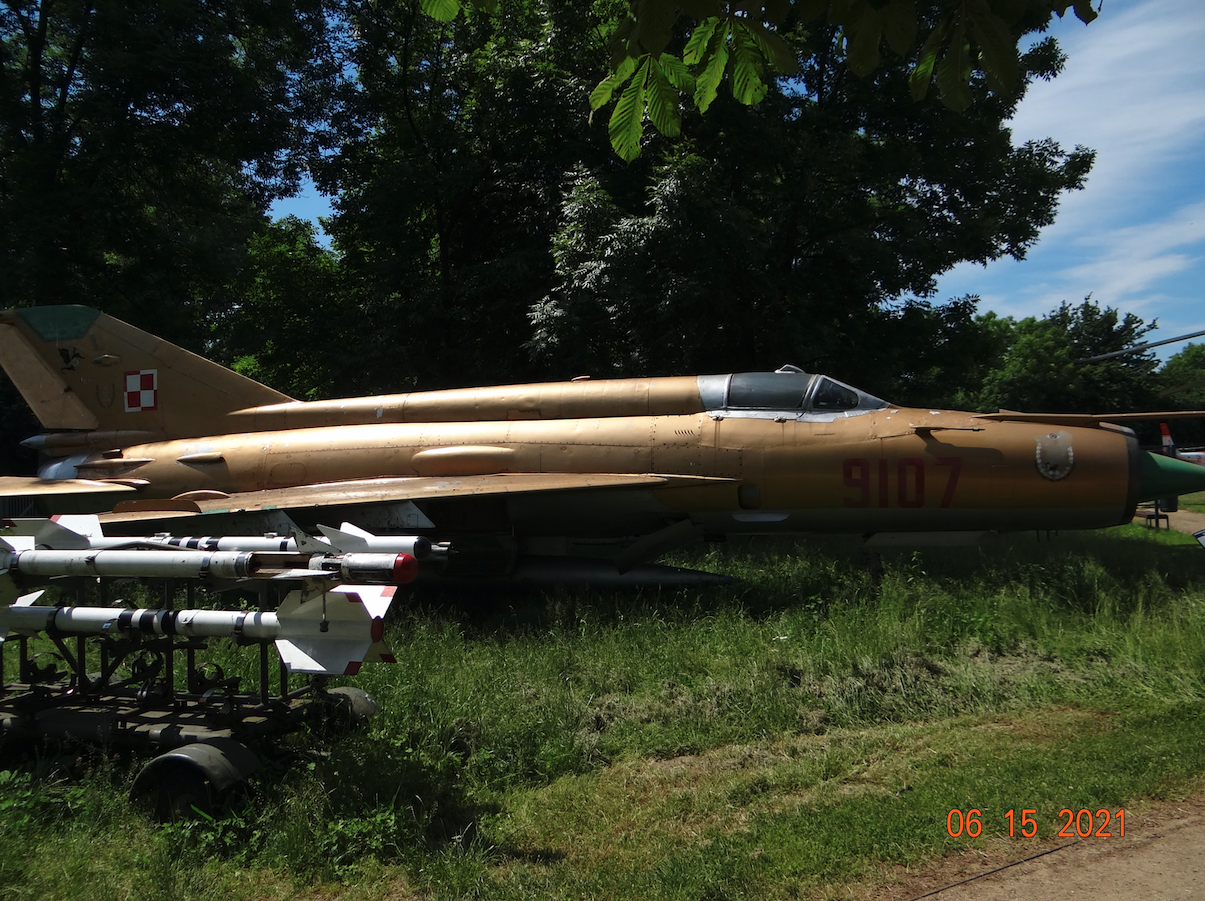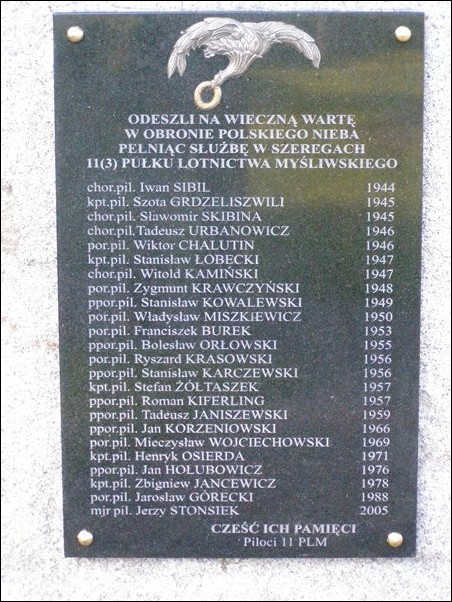Wrocław 2011-02-02
11th Fighter Aviation Regiment.
3rd Fighter Aviation Regiment.
11th Brandenburg Fighter Aviation Regiment.
11th Fighter Aviation Regiment named after Col. Bolesław Orliński in Wrocław-Strachowice.
1944-1999
Entry.
Soviet plans during World War II included the creation of a Polish air force as the 3rd Fighter-Bomber Aviation Division. Due to the lack of appropriate equipment, the 3rd Fighter Aviation Division was formed, consisting of three fighter regiments, which were given the designations: 9. PLM, 10. PLM, 11. PLM. In the margin at that time it was written "fighter aviation regiment", not "fighter aviation regiment". The basis was the operational order of September 7, 1944, which mentioned the establishment of the 1st Mixed Air Corps. The place of formation was the settlement of Karłówka in Ukraine.
Each regiment received the following structure – command, headquarters and three air squadrons. The 11th PLM had approximately 200 soldiers and 35 Yak-1/3 aircraft. All commanders and pilots were Soviet and came from other Soviet military units. Only the support staff included soldiers of Polish nationality. The core of the Regiment was the 832nd Soviet Regiment withdrawn from the front line in September 1944.
On September 17, 1944, training of pilots from the 9th PLM began at the Krasnogród airport, and pilots from the 10th PLM and 11th PLM began at the Karlovka airport. Readiness to start hostilities was achieved at the beginning of 1945, although the training actually lasted until March 1945. On January 20, 1945, the division began to be transferred to Poland. The Soviets took great care to ensure that the Poles did not fight on the territory of the Eastern Republic of Poland, in the Polish Borderlands, and they started fighting only after crossing the Bug River. The redeployment was carried out in several air and wheeled phases and was completed in March 1945. The first airport of the Regiment in Poland was the Ułęż Airport in the Lublin region. At that time, the Regiment did not take part in combat. The front was far away.
Presumably on April 20, 1945, the Soviets decided on the participation of the 11th PLM in the Berlin operation. On April 23-24, 1945, the Regiment was transferred to the Witnica Airport in the area of Kostrzyn nad Odrą. On the same day (April 24, 1945), the pilots performed their first combat flights. These were the tasks of providing air cover for the activities of the 1st Polish Army. This day has become a celebration for the individual.
From April 27, 1945, the Regiment flew combat flights from Strinbeck Airport, east of Berlin, and from May 1, 1945, from Eichstadt Airport, north of Berlin. At that time, the main tasks of the regiment were; covering infantry and tank attacks, covering Il-2 attack aircraft, attacking ground targets and reconnaissance.
11 PLM ended its combat route on May 3, 1945, on the Elbe in Brandenburg. 5 days before the actual end of the war, the 11th Regiment was ordered to return to Poland. These were Soviet actions to show Poland its place as a country dependent on the CCCP.
In total, the Regiment’s pilots performed 329 combat sorties. They fought 6 air battles, during which they shot down two German planes. On May 2, 1945, two Fieseler Fi 156 Storch aircraft. This act was performed by Warrant Officer Pilot Aleksander Krasucki (Soviet). The Regiment’s own losses were two pilots; commander of the 1st squadron, captain pilot Szot Grdzeliszwili and warrant officer Sławomir Skibina. Both were buried at the cemetery in Kutno. For its combat efforts, the division received the Grunwald Cross, 1st class and the title of Brandenburg.
The following aircraft were used in the 11th Regiment: Jak-1, Jak-3, Jak-9 M/T, Jak-7, Po-2, UT-2.
Regiment Commanders; Lt. Col. Pilot Viktor Sokolov (October 21, 1944 – February 18, 1945), Pilot Captain Sergei Volkov (February 18, 1945 – at least until 1946).
Period of Peace.
Before the end of hostilities, the division, as the 3rd Brandenburg Fighter Aviation Division, was ordered to return to the country to the Kutno airport (Kutno junction). The 11th Regiment was then transferred to the Łęczyca Airport, and then to the Czyżyny-Kraków Airport. After a short time, the 11th PLM was transferred to the airport on the coast to Gdynia-Babie Doły.
In 1946, regiments; The 9th PLM, 10th PLM, 11th PLM were subordinated directly to the Air Force Command and on January 24, 1946, by order of the Supreme Commander of the Polish Army, the 1st Fighter Aviation Division with its composition was established; 1. PLM in Warsaw, 2. PLM in Kraków (previous 10. PLM), 3. PLM (previous 11. PLM). This organizational system lasted until 1950. During this period, the Regiment operated Yak-9 fighters that took part in hostilities.
Due to the Korean War, the Soviets forced Poland to expand its army to a size larger than its actual defense needs. Therefore, new tactical formations began to be created. In the period 1950-1953, the 6th Air Force Fighter Aviation Division was formed. The basis of this tactical formation was the 3. PLM Gdynia Babie Doły. For this purpose, the 3rd PLM was based at the Wrocław-Strachowice Airport. The 6th DLM WL itself is subordinated to the 3rd Fighter Aviation Corps with headquarters in Poznań.
Presumably in 1950, Moscow decided to hand over the Strachowice Airport to the Polish Army. Since it was planned that the 3rd PLM would be rearmed with turbojet-powered aircraft, a concrete RWY had to be built. These works were carried out in the period 1952 – 1953. Regarding the information about the concrete RWY, there are doubts as to when this road was built. If it had been built by the Germans during World War II, it would have been located opposite the hangars. What’s more, three RWYs would be built on a triangular plan, as for example in Mierzęcice. That didn’t happen. Let us remember that the Strachowice Airport was not strategic for the Germans during World War II (1940-1944). The construction of the RWY in a new area, west of the existing take-off field, where there was more space, strongly suggests that the first concrete RWY was built in the period 1952-1953.
The 3rd PLM itself began training for turbojet-powered aircraft in 1953. The first type was the Yakovlev Yak-23 plane, and the Yakovlev Yak-17 W Agata training plane.
This equipment was used in Poland for a relatively short time, because the Polish industry was already mass-producing Lim-1 aircraft, licensed from Soviet MiG-15 fighters. These aircraft began to reach the Regiment in 1954.
Under the agreement with Czechoslovakia, the Polish Army received 33 CS-102/UTI MiG-15 training and combat aircraft. On May 12, 1955, the first three machines with numbers landed in Strachowice; 142693, 142697, 242234. Presumably in the fall of 1955, the first copies of Polish Lim-2 aircraft were delivered to the 3rd PLM. The regiment was one of the last to receive these new machines.
In 1957, there was a significant organizational change in Polish Aviation. Without going into details, as a result, the 3rd PLM is transferred from the Military Aviation to the National Air Defense Aviation. There were no divisions anymore, and the largest organizational unit is the corps. The 3rd PLM was assigned to the 3rd OPL OK Corps, with command in Wrocław. In addition to the 3rd PLM, it included: 38. PLM from Powidz, 45. PLM from Babimost, 62. PLM from Krzesiny. Additionally, the 3rd OPL OK Corps had at its disposal; 44th Liaison Aviation Squadron (Wrocław), 14th OPL Artillery Regiment (Wrocław), 98th OPL Artillery Regiment (Poznań), 18th Radiotechnical Battalion (Poznań-Ławica), 22nd Radiotechnical Battalion (Strachowice).
In 1958, passenger transport returned to Strachowice Airport. The main reason for the change was the lack of a concrete RWY at the Gądów Mały Airport. LOT Polish Airlines planes landed and took off again at Strachowice Airport. They were planes; Douglas DC-3, Lisunov Li-2, Iliuszyn Il-12 B, Iliuszyn (VEB) Il-14 P.
Around 1959, the 3rd PLM adopted the first Lim-5 type fighter aircraft. The planes came from the last production series. The first batch consisted of 12 machines. These planes became the basic fighters in the Regiment for about 10 years. They were used in the Regiment until the end of the 1980s.
Around 1965, it was certain that the Regiment would be armed with MiG-21 supersonic fighter aircraft, which became the basic equipment of the unit until the end of its existence. In 1966, the first MiG-21 F-13 fighters appeared in the unit. These were machines obtained from other Polish military units that at that time were already receiving newer versions of MiG-21 aircraft. MiG-21 F-13 nb 2017, 2224, 2307 fighters were definitely sent to Strachowice Airport. As for other planes, there are doubts. They consist in the fact that at the end of the 1960s the numbering of the regiments was changed. The regiment from Debrzno changed its number from 11 to 9, and the regiment from Strachowice from number 3 to 11. And both regiments used MiG-21 F-13 aircraft. So the next planes in Strachowice could have been MiG-21 F-13 nb 808, 809, 811, 812, 814.
At the turn of the 1960s and 1970s, the Regiment received the first MiG-21 PF and MiG-21 PFM fighters, which became the basic type used in the Regiment in Strachowice. These aircraft allowed the Regiment to be rearmed with supersonic fighters, although the 3rd Air Squadron still operated Lim-5 aircraft.
In 1968, another important reorganization took place in Poland, which resulted in a change of name from the 3rd PLM to the 11th Brandenburg PLM, i.e. a return to the historical name. This is important because it emphasizes that the Regiment took part in battles against the Germans. In 1970, the Regiment received the right to have a collective patron; Settlers of the Lower Silesian Land. In 1973, the Regiment was officially restored to its historical distinctive name and until September 1991 the regiment was called the 11th Brandenburg Fighter Aviation Regiment OPK. Settlers of the Lower Silesian Land. We must also remember that at that time the 11th PLM stationed in Debrzno was renamed the 9th PLM.
On July 15, 1970, an unusual accident occurred during exercises conducted jointly with the Czechoslovak Air Force. The exercises were held under the code name ZENIT-70 and were aimed at strengthening the Unified Air Defense System of the countries – parties to the Warsaw Pact. One of the tasks was to intercept the intruder by a fighter. Pilot captain Henryk Osierda from the 11th PLM was preparing for this task. However, it turned out that his MiG-21 PFM plane was out of order. Another plane was ordered to perform the task. However, it was a duty aircraft, armed with two R-3 S guided missiles, and not with R-3 U training missiles. The attacker was the Czechoslovak Su-7 BKL, which was piloted by Captain Frantiszek Kruźik. In the heat of battle, pilot captain Henryk Osierda fired a missile. The Su-7 BKL plane was hit. Fortunately, its pilot ejected successfully and saved himself by landing by parachute. In exchange for the lost plane, Poland handed over the Polish Su-7 BKL plane No. 6023 to the Czechoslovak Air Force. The pilots of the incident met and had no grudges against each other. Was it solely the fault of Captain Henryk Osierd? Was he properly informed and just forgot? We don’t know that. However, the pilot had problems, and in addition, half a year later he died in a plane crash (February 16, 1971). Honor his memory!
In the period from April 8 to December 1, 1976, the 11th Regiment was commanded by the first Polish aviator – cosmonaut, Major. pilot Mirosław Hermaszewski.
In August 1979, the 11th Regiment was awarded the Commander’s Cross of the Order of Polonia Restituta.Around 1980, the 11th Regiment received the first MiG-21 M/MF aircraft. 11. PLM (as a unit of Unit 1456) operates in three squadrons; 1 and 2 with MiG-21 M/MF aircraft, and the 3rd squadron with Lim-5 aircraft. MiG-21 PF/PFM aircraft were transferred to other units.
In 1989, the 11th Regiment was obliged to transfer several MiG-21 MF aircraft to the 62nd PLM in Krzesiny. However, already in 1990, these planes returned to Starachowice, because there was no sufficient personnel and material base in Krzesiny to operate these planes. In 1990, the Ministry of National Defense decided to withdraw MiG-21 PF / PFM aircraft from service in the Polish Aviation. In 1991, the 11th Regiment had 24 MiG-21 MF, 5 MiG-21 UM and about 4 TS-11 Iskra aircraft in stock.
MiG-21 MF planes that were used in the 11th PLM carried nb; 6503, 6513, 6514, 6715, 6804, 7399, 7405, 7436, 7489, 7502, 7555, 7600, 7656, 7675, 7715, 7788, 7805, 7811, 7903, 8001, 80 05, 8006, 8007, 8009, 8013, 8015, 8022, 8039, 8055, 8099, 8101, 8113, 8122, 8189, 9012, 9108. MiG-21 M planes that were used in the 11th PLM carried nb; 1807, 1808, 1809, 1904, 2006, 2007.
The combat aircraft were complemented by MiG-21 UM combat training aircraft. MiG-21 UM planes used in the 11th PLM carried nb; 9296, 9311, 9348, 9349, 9352, 9354.
TS-11 Iskra aircraft were introduced to the unit mainly to maintain piloting habits and obtain the necessary annual pilot training. Let us recall that Poland’s economic situation was bad. During this period, the Ministry of National Defense could afford to purchase only 12 MiG-29 aircraft and there was no chance for more.
On the eve of socio-political changes in Poland (1989), the 11th Brandenburg PLM is still subordinated to the 3rd OPK Corps (formerly OPL OK) with headquarters in Wrocław, but only in two regiments. The second one was Krzesina’s 62nd PLM. Additionally, at that time, the 3rd OPK Corps had: 1st OPK Artillery Brigade in Bytom, 79th Independent Artillery Regiment in Poznań, 3rd Radio Engineering Brigade.
In 1989, based on the equipment of the 2nd squadron of the 11th PLM in Strachowice, the 2nd Fighter Aviation Squadron in Mierzęcice was established. It was a unit organizationally subordinate to the 11th PLM, but in fact it was independent. Most of the staff did not come from Strachowice. See separate Chapter.
In 1991, the name of the unit was changed, necessary due to the socio-economic changes in the Republic of Poland. The name of the 11th Brandenburg Fighter Aviation Regiment was changed to the 11th Fighter Aviation Regiment. In August 1994, based on the decision of the Ministry of National Defense, the pilot and commander – Col. Bolesław Orliński – became the patron of the Regiment. Finally, the Regiment had a real patron, a wonderful Pole and pilot, who is also buried in Wrocław.
At the beginning of 1999, the 2nd ELM Mierzęcice was disbanded. The planes returned to 11. PLM Strachowice. But already in the fall of 1999, a decision was made to disband the 11th PLM. All of his operational MiG-21 MF planes were transferred to the 3rd PLM (formerly 62nd PLM) in Krzesiny and the 10th PLM in Łask. Thanks to this, all MiG-21 MFs still in use were concentrated in these two regiments.
On December 31, 1999, 11. PLM Strachowice ceased to exist.
Airplanes used in the 3rd/11th Fighter Aviation Regiment in Wrocław-Strachowice;
Yakovlev Jak-17 W, Yakovlev Yak-23, WSK Mielec Lim-1, WSK Mielec Lim-2, WSK Mielec Lim-5, SB Lim-2, Mikojan and Guriewicz MiG-21 F-13, Mikojan and Guriewicz MiG-21 PF, Mikojan and Guriewicz MiG-21 PFM, Mikojan and Guriewicz MiG-21 M, Mikojan and Guriewicz MiG-21 MF, Mikojan and Guriewicz MiG-21 U / UM, TS-11 Iskra.
Aircraft accidents in the 11th PLM:
On January 24, 1969, a MiG-21 PFM plane from the 11th PLM had an accident near Zamłynie. Pilot Lieutenant Mieczysław Wojciechowski died. Honor his memory! Pilot lieutenant Mieczysław Wojciechowski, son of Mieczysław, born on April 29, 1940, in the town of Wilczkowice in the Kraków district. A graduate of OSL No. 5 in Radom on March 25, 1962. Senior pilot of the 11th PLM in Wrocław, 1st class pilot. 560 hours of flight time on airplanes; Yak-11, SB Lim-2 / UTI MiG-15, Lim-5, MiG-21. Task: Intercept flight in DTWA using a radar sight. Circumstances of the disaster: The pilot was flying a MiG-21 PFM aircraft during the day in difficult weather conditions, using a radar sight. The plane collided with the ground near Zamłynie. The probable cause of the disaster was improper distribution of attention while searching for the target. The pilot was buried at the Rakowicki Cemetery in Kraków.
On February 16, 1971, a MiG-21 PFM from the 11th PLM near Wrząca Śląska suffered an accident. The pilot, Captain Henryk Osierda, was killed. Honor his memory!
On June 14, 1978, a MiG-21 U from the 11th PLM had an accident at the Wrocław-Strachowice airport. The pilot, Captain Zbigniew Jancewicz, died. No further information available.
On August 2, 1979, a MiG-21 F-13 nb 2409 no. 762409 from the 11th PLM suffered an accident. The pilot survived.
On March 4, 1988, a MiG-21 MF from the 11th PLM had an accident at the Starachowice-Wrocław airport. Pilot Lieutenant Jarosław Górecki died during take-off for a night flight. The cause of the disaster was engine failure resulting from damage to the air duct supplying pressurized air to the afterburner fuel pump. The excessive amount of fuel caused the turbine blades to burn out and the engine to stop working. In the place where the pilot died, colleagues from JW. 1465 they placed a commemorative plaque. Honor his memory!
On the site of the former 3rd BLot there is an obelisk with a plaque commemorating all those killed in the 3rd/11th PLM.
Written by Karol Placha Hetman

